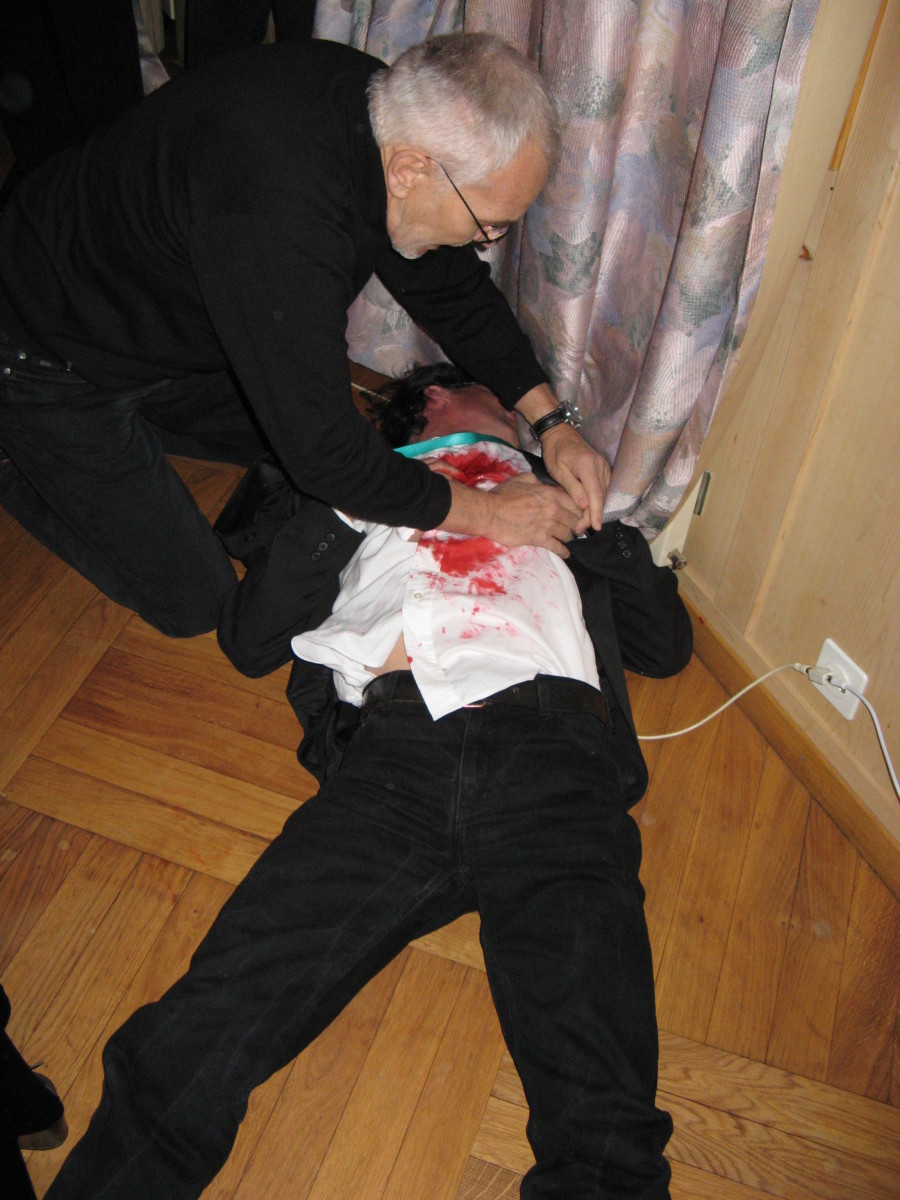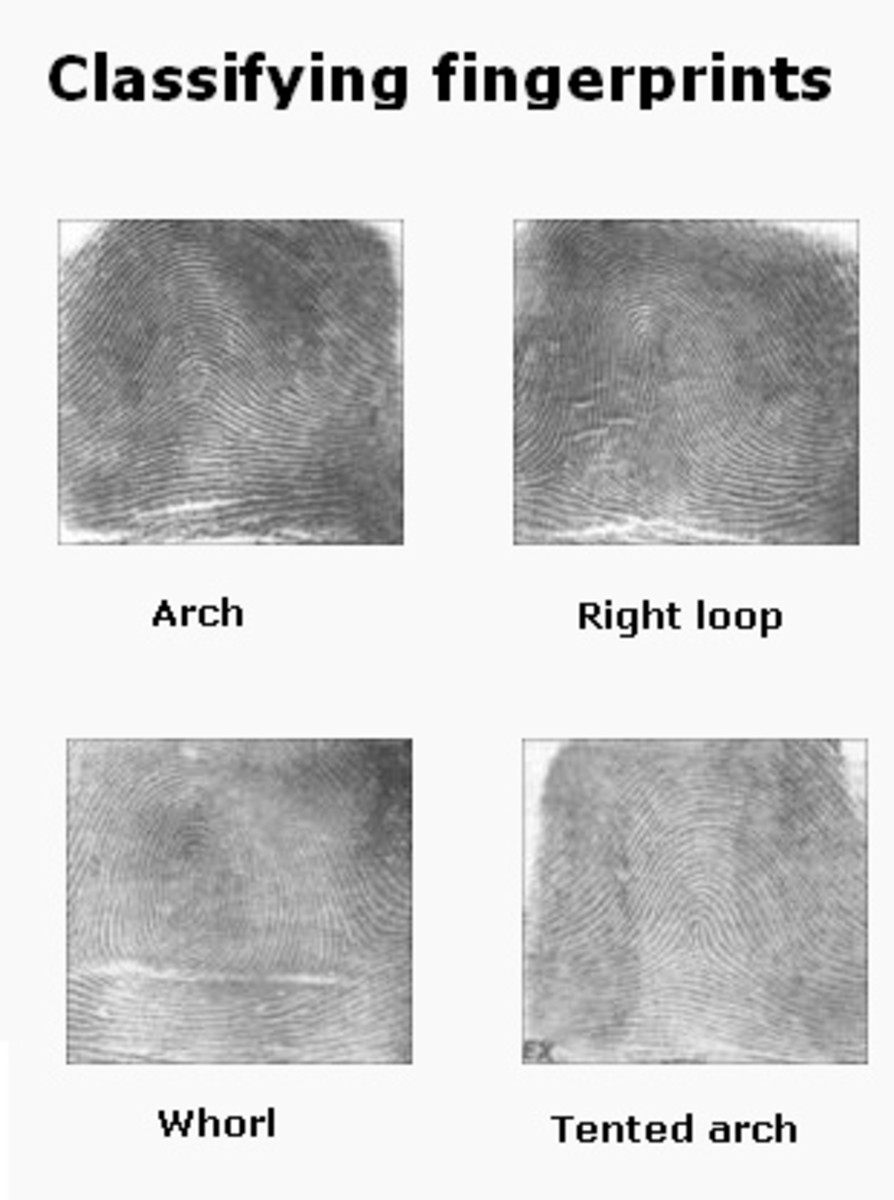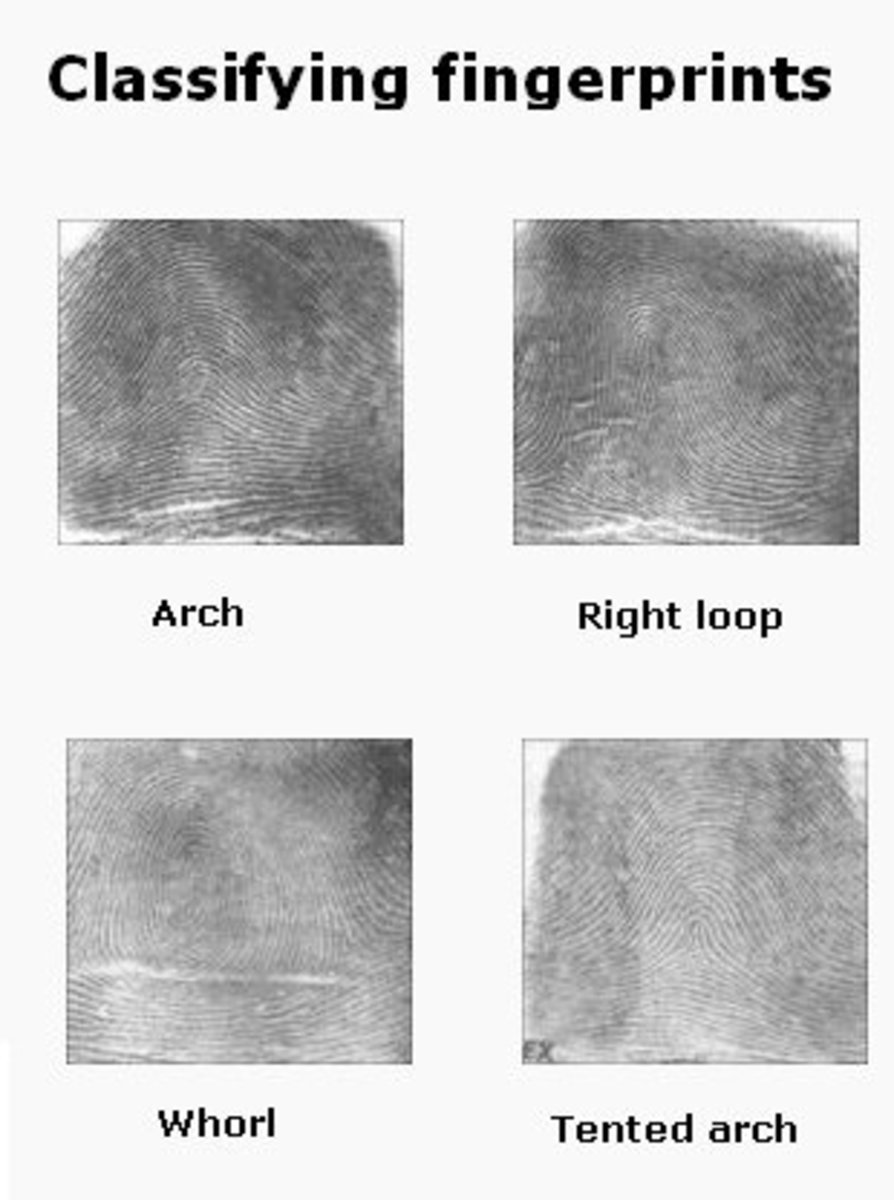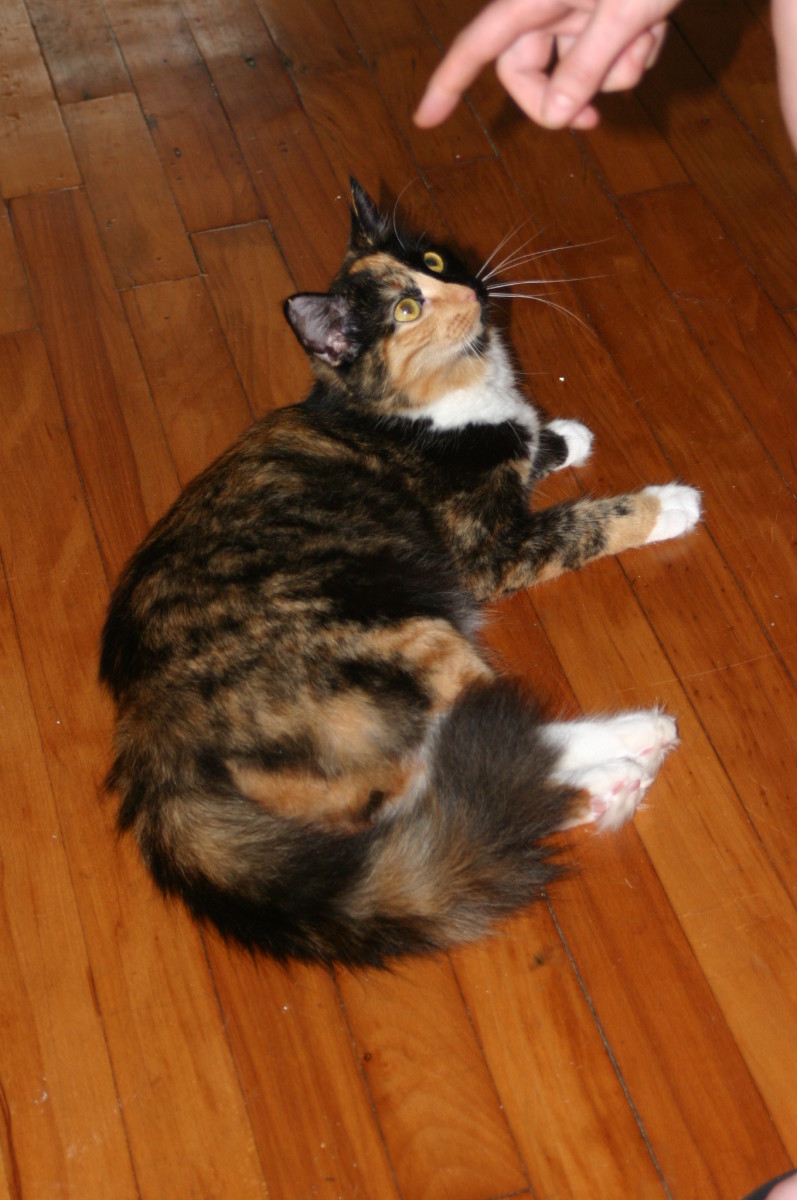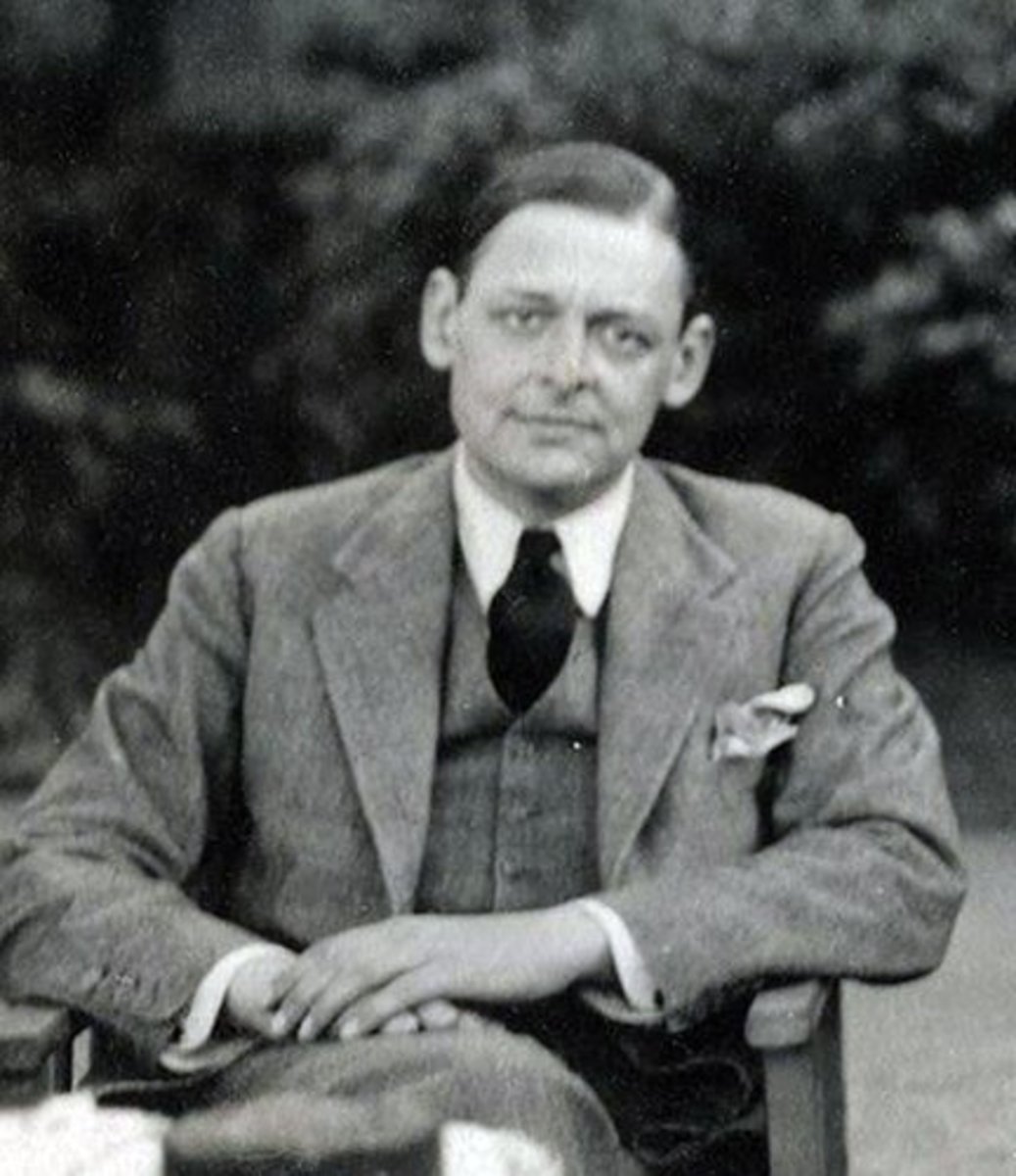How to Write a Murder Mystery
58 Tips to Write a Stellar Murder Novel!
A Crime Scene Photographer records a crime scene from every angle. They focus on distance and size of objects.
Forensic Psycholgists preovide knowledge about the criminal mind. They can create a criminal profile.
Anatomic pathology perform autopsies , examing clues, causes, and manner of unusual deaths.
Fingerprint eperts match fingerprints using the pattern of swirls and ridges which are unique to every individual.
Forensic anthropologists examine bones,and can determine appearance, lifestyle, maybe ause of death .
Forensic artists aid the anthropologists in giving aclear pictorial outline of what the person lookec likebefore death. This is is especially helpful when the death occurred a long time ago and decomposition is complete.
Because it is passed from the mother only, mtDNA is a powerful tool for tracking ancestry and is used to identify individuals.
DNA is usually extracted from the nucleus of a cell. As the sample ages, there is a lack of nucleated cellular material, however mtDNA remains.
Combined DNA Index System (CODIS) is a National database of DNA samples recovered at crime scenes or taken from suspects. It has been used to identify suspects and link serial crimes to each other.
A blood pattern that is created to portray being thrown from a blood-bearing object in motion is called cast-off.
Spatter is blood which has been dispersed as a result of force applied to a source of blood. Patterns produced are often characteristic of the nature of the forces which created them.
A transfer of blood leaving a feathering pattern in an outward and ligter colored direction is a swipe pattern.
Dactyloscopy is the scientific study of fingerprints and it was developed nearly a hundred years ago.
Luminol helps identify sperm, blood and body fluids with a greenish-blue color under fluorescent lighting.
The Henry Classification System categorizes fingerprint records into primary groupings based pattern types: arch, tented arch, right loop, left loop, whorl, and twin loop.
Some Types of Fingerprints
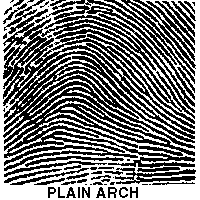
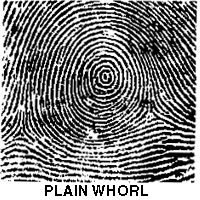
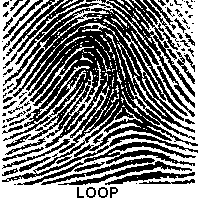
Fingerprints are processed through the Integrated Automated Fingerprint Identification System. (IAFIS)
Most of the time, fingerprintsare identifiable through the naked eye, however, sometimes a luminescent substance is applied to assist with identification.
Super glue isan adhesive used that when heated on an object, latent fingerprintswill appear on smooth surfaces like glass.
The super glue method was first employed by the Criminal Identification Division of the Japanese National Police Agency in 1978.
Super glue works because it combines with the amino acids, fatty acids, and proteins transferred from fingertip to produce a visible, sticky white material that forms along the ridges of the fingerprint.
Models of shoes and and their sole patterns are a lot like fingerprints because they are individualized by brand, style and the unique tread and wear of the owner. SoleMate is a data base of shoe patterns.
The study of lip prints is called cheiloscopy. There are 5 basic catagories used for comparison. They are: diamond grooves, long vertical grooves, short vertical grooves, rectangular grooves and branching grooves.
Trace materials include human hair, animal hair, textile fibers and fabric, rope, feathers, wood, soil, glass, and building materials.
TheLocar theory states that every crime scene hasa story to tell and evidence left behind to speak those secrets.
Human hairs can be used to determine race, body area, length, root type (naturally shed/forcibly removed), and any artificial treatment, damage, or disease.
Trace evidence can be exchanged through primary or secondary contact.
Mammal Hairs and other animal hairsall have a unique structure. A classification of skunk, for example, can narrow the search of a missing body.
Trace evidence can be collected by “picking” it from the surface with clean forceps, “lifting” using tape, “scraping” with a clean spatula or similar tool to dislodge trace evidence into a collection surface or “combing” a clean comb or brush through hair and collecting the debris.
Trace materials are:soil, hairs, threads from fabric, feathers, glass, and building material.
“Vacuum Sweeping” is usually done after other collection techniques because it’s indiscriminate and may result in a large amount of extraneous material.
Bullets produce tissue damage in three ways: Laceration and crushing occurs with low velocity bullets, as in handguns, that travel less than 1000 fps (feet per second) do virtually all their damage via crushing; cavitation causes a “permanent” cavity by the path of the bullet itself; and shock waves which compress the medium and travel ahead of the bullet, as well as to the sides.
Rifling creates a spin on bulletswhich create unique grooves on bullets in the gun chamber.
A national Integrated Ballistic Information System (IBIS) is maintained by the Bureau of Alcohol, Tobacco, Firearms and Explosives. The database contains bullet and cartridge casings found at crime scenes and test-fires of guns found at a crime scene or on a suspect.
The study of bullistics began as the study of the flight of projectiles. The term is now use for firearms.
Wounds from other types of weapons include: an incision, produced with a sharp edge, like a scalpel; a puncture, made with a sharp, pointed instrument; an abrasion, produced by a scraping injury; laceration is a tearing injury from a blunt object; and a contusion is a bruise made in soft tissue by a blunt object.
The number and direction of barrel grooves varies by manufacturer and model, for example: Colt uses a left-hand twist, while Smith and Wesson uses a right hand twist; a M16 rifle uses a 1 in 7 inch twist, most civilian AR-15s use a 1 in 9 inch twist. The M1903 Springfield rifle had two, four, or six grooves depending on the manufacturer.
Back Spatter – Blood directed back towards the source of energy or force that caused the spatter.
Draw-Back Effect – Blood in the barrel of a firearm that has been drawn backward into the muzzle.
Expirated Blood – Blood that is blown out of the nose, mouth, or a wound as a result of air pressure and/or air flow which is the propelling force.
Ricochet – The deflection of blood after impact with a target surface that results in straining of a second target surface.

Pelvic girdle - The female pelvis is broad and shallow to allow for birth. The male pelvis is much heavier and narrower than that of the female. Other names for the pelvic bone are innominate bone and coxal bone.
Incision: Produced with a sharp edge (just as a surgical scalpel blade is used to make a surgical incision)
Puncture: Made by a sharp, pointed instrument.
Abrasion: Produced by a scraping injury
Laceration: Tearing injury from a blunt object.
Contusion: A bruise made in soft tissue by a blunt object.
Symptoms of Abuse: Multiple contusions of varying ages in multiple body regions.
As the body decomposes, the outer layer of skin separates from the inner layer. The inner layer may become water logged, but removing the outer layer of skin will yield finger prints.
The AK47s are favored by terrorists, because of their durability and power. It is the most highly-produced assault rifle today with only minimal changes from the original design. The AK-47 rifle has only eight moving parts so it can be disassembled in fifty seconds.
Forensic Fingerprint Fuming
“Research has shown that schizophrenia affects men and women equally and occurs at similar rates in all ethnic groups around the world.”
Victims that are incapacitated (bound, drugged, or otherwise helpless) often have associated fecal and urine soaked clothes or bed dressings. Such material will attract certain species of flies that otherwise would not be recovered. Their presence can yield many clues to both antemortem and postmortem circumstances of the crime.
An entry wound without stippling, sooting, or gunshot residue particles cannot be regarded as a distant-range shot without considering the presence of hair as an intervening object.
Persons in older age groups experienced lower rates of violent victimization than person in younger age groups.
Adipocere:A waxy, soap-like substance formed during the decomposition of bodies buried in moist places. It consists principally of insoluble salts of fatty acids. Also called "grave wax." Composed of oleic, palmitic, and stearic acids.
Aspermia: The absence of sperm. Sterility in males.
Lividity: Also known as "liver mortis." Postmortem discoloration caused by the gravitation of blood to various parts of the body. Can be used to help determine time of death, and placement of a body after death.
Petechial Hemorrhage: Small, pin-like hemorrhages that occur beneath the skin. Usually observed on the lining of the inner surface of the eyelids. This is a common result of death by asphyxiation or strangulation

